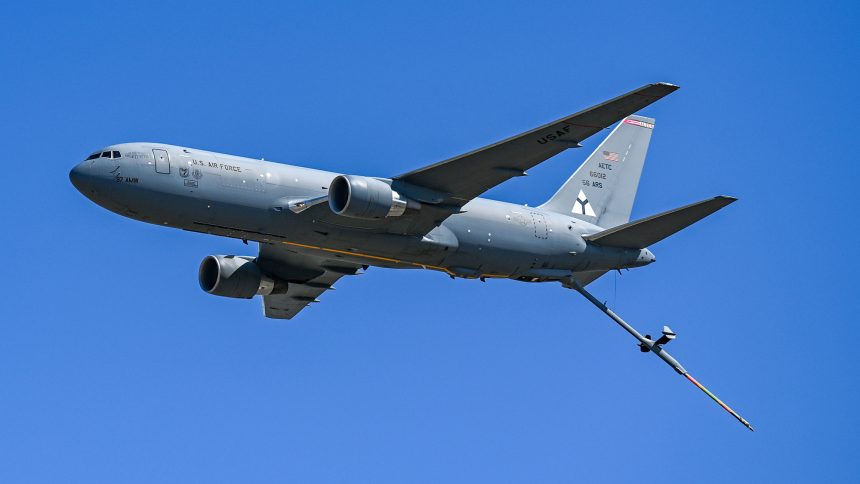Boeing discovered cracks in the aileron hinges of two KC-46s which were being readied for delivery, prompting the U.S. Air Force to launch a fleet-wide inspection while the root cause is being investigated.
The U.S. Air Force has recently paused deliveries of Boeing’s KC-46 Pegasus tanker aircraft and launched a fleet-wide inspection on the 89 aircraft currently in service. This decision came after cracks were discovered in the ‘outboard fixed-trailing-edge support structure’ of two planes, which were set to be handed over to the Air Force.
To put it simply, the cracks are located on the aileron hinges, but they do not involve the flight surfaces. The Boeing 767, from which the KC-46 is derived, was already known for the risk of developing cracks on the aileron hinges over time, however the discovery of the cracks on a newly built aircraft required immediate action.
“The damage does not pose a safety-of-flight concern; however, identified cracks must be repaired before returning an aircraft to service,” an Air Force spokesperson said. “Boeing, the Program Office, and Air Mobility Command are working to quickly identify the root cause and develop both a near and long-term way ahead.”
The War Zone, which first published the news, said the issue was discovered by Boeing during the inspections on four new planes set to be sent to the Military Delivery Center. The KC-46 is a critical component in the Air Force’s modernized aerial refueling fleet and the new issues might further delay a program already burdened with challenges.
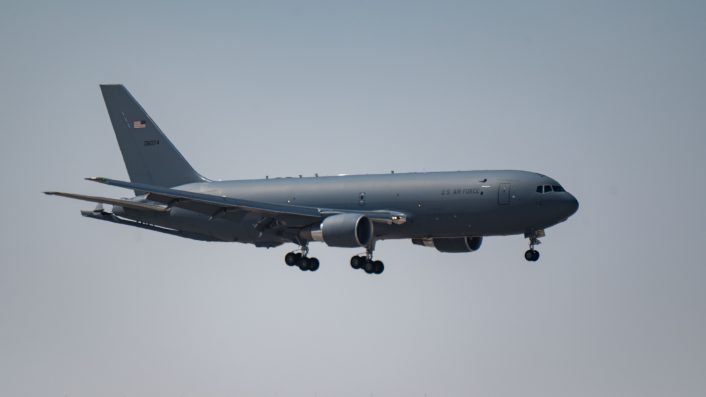
Another Setback in the KC-46 Program
The KC-46 program has been under intense scrutiny since its inception due to a series of technical difficulties and significant cost overruns. The tanker was designed to replace the aging fleet of KC-135 Stratotankers, offering more advanced refueling capabilities, new technologies, and enhanced operational flexibility. However, the road to operational readiness for the KC-46 has been far from smooth.
The recent discovery of cracks in the aileron hinges marks another setback for the program, which has already seen numerous delays due to issues ranging from software defects to problems with its refueling system. These technical challenges have led to billions of dollars in cost overruns for Boeing and an extended timeline for the tanker’s deployment.
The aileron hinge issue is particularly concerning as it directly impacts the structural integrity of the aircraft. While the cracks were identified during routine inspection processes and have not resulted in any in-flight emergencies, their appearance on newly built planes raises new questions about the overall reliability of the aircraft, especially after the latest Director Operational Test & Evaluation (DOT&E) mentioned the KC-46A was “not meeting many of its suitability metrics.”
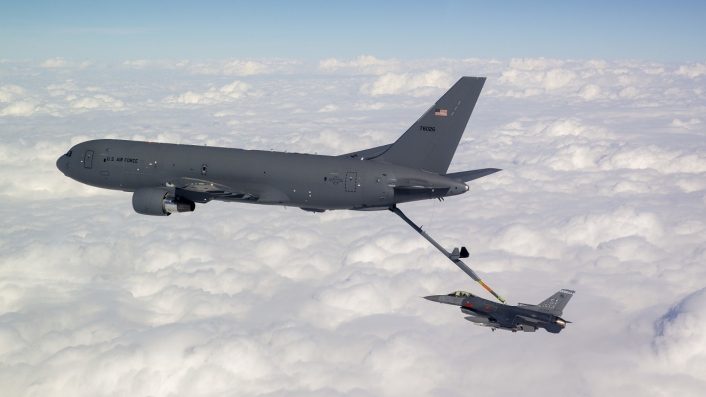
The KC-46A Pegasus
While a Boeing 767 derivative too, the KC-46A Pegasus the U.S. Air Force selected to replace the older KC-135 features a stretched fuselage, different engines, cockpit, wings and boom: in other words, it’s almost a completely different tanker. One of the main differences that makes it stand out compared to previous USAF tankers is the absence of a rear-facing window for the refueling boom operator, replaced by a camera system.
The KC-46 was born from the KC-X program, for which Boeing submitted its KC-767 tanker proposal in 2007. The aircraft, however, was based on the in-development 767-200LRF (Long Range Freighter), rather than the -200ER, differing by combining the -200ER fuselage, -300F wing, gear, cargo door and floor, -400ER digital flightdeck and flaps, upgraded engines and “sixth-generation” fly-by-wire boom.
Boeing proposal was selected as the winning one in 2011 and received the designation KC-46A, with the first flight in 2015. Since then, the program has been plagued by deficiencies which required redesigns, causing delays and over $7 billion charges incurred by Boeing.
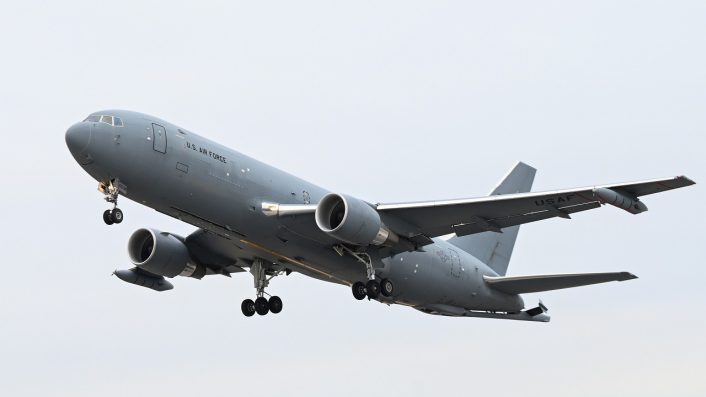
The History of Technical Issues
As of Jan. 2024, the KC-46 has six category 1 deficiencies, which could cause loss of an aircraft, injury, or death, according to the Air Force classification. Work is ongoing to fix them once for all.
The first, possibly the most important, is related to the cameras which replaced the boom operator’s window. There are two groups of cameras: the Remote Vision System (RVS), which focuses on the boom, and a second group which provides a panoramic view to the rear of the tanker. Both systems struggle under certain environmental conditions and Boeing is working on an RVS 2.0, expected in late 2025.
Another problem is related to the boom, and specifically an actuator inside the boom which prevents the A-10C to be refueled. In fact, the A-10 can’t generate enough force to stay connected to the boom due to its low speed, so the hydraulic actuator provides that force to keep the boom rod in the receptacle. A new actuator is expected by 2026.
Then, there are product quality issues, which involve three separate parts of the aircraft: drain masts for its auxiliary power unit (APU), a seal for its fuel manifold and a drain line that runs near the cockpit. Specifically, the APU’s drain masts showed a tendency to crack, solved with additional reinforcements.
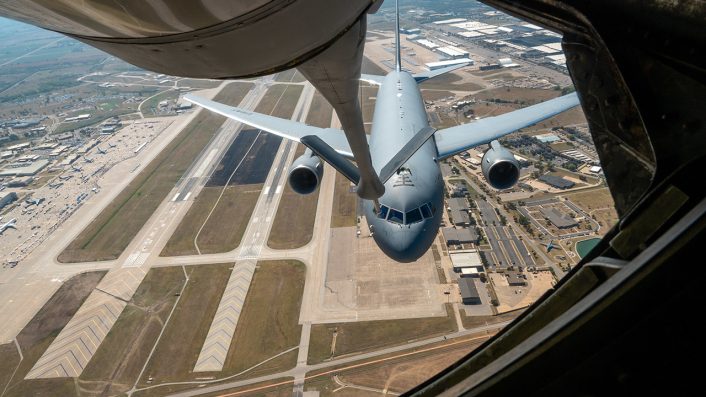
The fuel manifold, which runs 555 feet throughout the plane, is fitted with flex couplings throughout so that it can bend in flight. Incorrect positioning of the coupling’s seals enabled fuel to seep out of the inner tube into the outer one, so Boeing implemented a new flex seal.
The last one was related to the AAR receptacle on top of the cockpit, specifically the receptacle drain line, which empties liquid out but is at risk of cracking and could cause fuel to leak into the cockpit. A fix has been found and should be implemented by next year.
Adding to this, there is another problem with a key feature, the Wing Aerial Refueling Pods. The WARPs, mounted on the aircraft’s wings, are designed to refuel two aircraft simultaneously, however the Director of Operational Test & Evaluation’s 2023 annual report mentioned the pods did not yet enter Initial Operational Test & Evaluation (IOT&E) because they didn’t achieve the FAA supplemental-type certification.
Specifically, the WARPs did not meet certification requirements for cowling bird strike, lightning tolerance, and wiring corrosion protection. The Air Force stated that certification is ongoing and IOT&E should start this year.
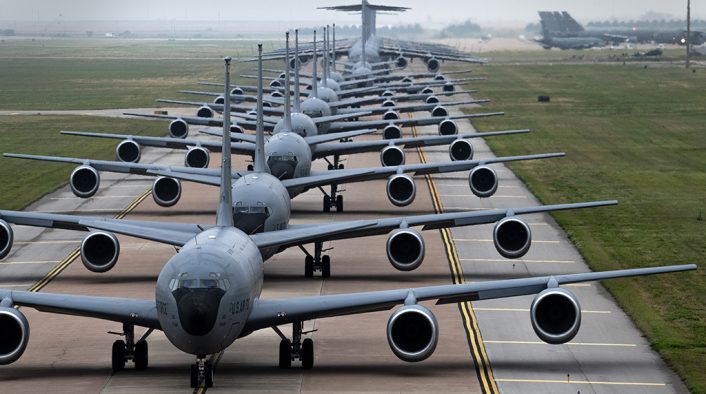
Boeing’s Efforts to Resolve Issues
In response to the ongoing problems, Boeing has been working with the U.S. Air Force to resolve the KC-46’s technical defects. The company has already pledged to fix the issues as quickly as possible, but the newly found cracks raise broader concerns about the future of the program.
The tanker’s integration with other Air Force platforms has been a slow process, as it has encountered difficulties in meeting the full scope of its operational requirements. The U.S. military has an urgent need for new tankers to satisfy its refueling needs, especially with the KC-10 already retired and the KC-135’s approaching the 70 years of service.
A timeline for the resume of the deliveries is not yet available, and the additional setbacks could now delay the full operational readiness of the KC-46 even further. It is unclear how much the new issues will affect the operational KC-46 fleet, as the tanker is now taking a larger share of the refueling missions and the inspections might mean that each aircraft can’t fly until it has been checked or it might require a waiver for urgent missions.

